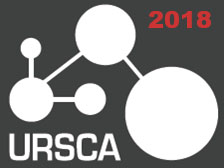Sprouting behavior of potato seed tubers (cv. Russet Burbank) after the application of different plant growth regulators
Abstract
The yield of a potato crop is strongly influenced by the physiological age of potato tubers at planting. Physiological age can be defined as the stage of development of a seed tuber, which changes progressively by increasing chronological age and is modified by growth history and storage conditions (Struik & Wiersema, 1999). It is often characterized as the sprouting potential of seed. It is hard to overstate the importance of physiological age of seed potatoes to the potato industry: it strongly affects emergence of sprouts, number of stems per plant, number of tubers per stem, tuber-size distribution and tuber yield of the progeny crop (Van der Zaag & Van Loon, 1987; Van Ittersum, 1992; Struik & Wiersema, 1999; Struik, 2007). Thus, understanding the mechanisms of physiological aging and the ability to control it is crucial to maximizing crop yield and quality. Previous studies on physiological age of seed potato have been focused on environmental factors, such as relative humidity, temperature, photoperiod, and diffuse light (Struik & Wiersema, 1999; Struik et al., 2006). Tuber respiration appears to be a pacemaker of aging: the longer the respiration rate remains high, the older the seed tubers will be (Blauer et al., 2013). In addition, research has shown that plant growth regulators such as abscisic acid (ABA), ethylene, indole-3-acetic acid (IAA), cytokinins and gibberellins play a role in the control of tuber dormancy and subsequent sprout growth (Suttle, 2007). Up to date, there is still a strong need for further research to better understand their role and the effect on the physiological age (Suttle, 2004; Suttle, 2007; Kloostermann & Bachem, 2014; Wohleb et al., 2014).
In this study, different growth regulators such as Gibberellic Acid, ABA, Auxin, Cytokinin and 2.4-D were applied to the meristematic tissue of the seed tuber at three different concentrations (2.5, 5, 10 ppm) and stored at two different temperatures (5, 12°C). Afterwards, the break of dormancy and the sprouting behaviour were observed. At the time of writing, the study was not completed and thus no results can be presented at this time. The findings of this study will give indications for further research to develop new methods to control physiological age.
Key words: seed potato, growth regulator, dormancy, sprouting, physiological age, Solanum tuberosum L.
*Indicates presenter
Published
Issue
Section
License
Authors retain any and all existing copyright to works contributed to these proceedings.
By submitting work to the URSCA Proceedings, contributors grant non-exclusive rights to MacEwan University and MacEwan University Library to make items accessible online and take any necessary steps to preserve them.

